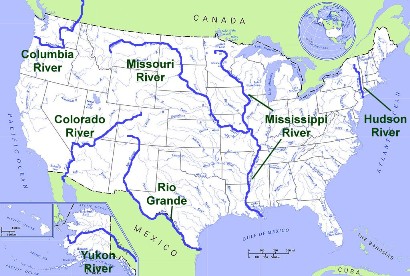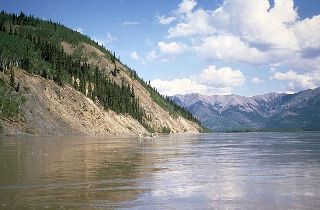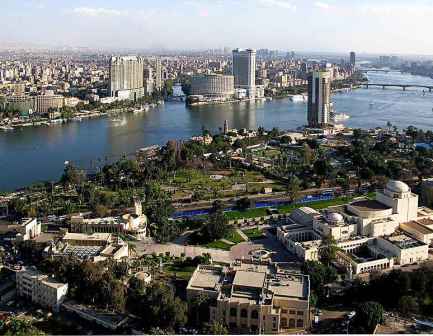
Major Rivers in the United States
Mississippi
The Mississippi River is one of the most important rivers in the United
States. It flows 2,340 miles north to south from Minnesota to the Gulf
of Mexico in Louisiana. Together with the Missouri River, it forms the
fourth largest
river system in the world. The source of the Mississippi is Lake Itasca in Minnesota.
In the early history of the United States, the Mississippi River served
as the westernmost border of the country until the Louisiana Territory
was purchased from France in 1803. After that, the river was a symbol of
the start of the American frontier. Today the river is an important
transportation waterway, carrying goods from the middle of the country
to the port of New Orleans and into the Gulf of Mexico.
The Mississippi River travels through several states including
Louisiana, Mississippi, Tennessee, Arkansas, Kentucky, Missouri,
Illinois, Iowa, Wisconsin, and Minnesota. It acts as the border between
several of these states. It also travels through several major cities
including Minneapolis, St. Louis, Memphis, and New Orleans.
Missouri
The Missouri River is the longest river in the United States at 2,540
miles long. Together with the Mississippi River, it forms the fourth
largest river system in the world. It begins in Western Montana and
flows to the Mississippi River just north of St. Louis. It travels
through several states including Montana, North Dakota, South Dakota,
Iowa, Nebraska, Kansas, and Missouri.
The first explorers to travel the entire
length of the Missouri River were Lewis and Clark. They used the
Missouri to make their way west when exploring the Louisiana Purchase.
The river played an important role in the early history of the American
frontier as the major trails to the west, such as the Oregon and Santa
Fe Trail, began at the Missouri River.
Rio Grande
The Rio Grande flows 1,900 miles from Colorado to the Gulf of Mexico.
Along the way it travels through New Mexico and serves as the southern
border of Texas between the United States and Mexico. Major tributaries
of the Rio Grande include the Rio Conchos, the Rio Chama, and the San
Juan River.
Hudson
The Hudson River flows 315 miles north to south in eastern New York. It
is a fairly short river when compared to many of the other rivers on
this page. However, the Hudson played an important role in the early
history of the United States. When the
Erie Canal
was opened in 1825, the Hudson was connected to the Great Lakes. This
created a trade route from the Atlantic Ocean to the Great Lakes region.
It had a major impact in the growth of New York City.
Colorado
The Colorado River flows 1,450 miles from the Rocky Mountains of
Colorado to the Gulf of California. Along the way it passes through
Utah, Arizona, Nevada, California, and Mexico. The river is famous for
carving out the Grand Canyon over the course of millions of years. Today
the Colorado is an important source of water and
power
for the southwest United States. The Hoover Dam was built on the
Colorado in 1936. It formed Lake Mead and provides power to the city of
Las Vegas.
Columbia
The largest river in the northwest region of the United States is the
Columbia River. It stretches 1,240 miles from the Canadian Rockies,
through Washington state, and along the Oregon-Washington border to the
Pacific Ocean. The river is an excellent source of power and is home to
Grand Coulee Dam, the largest power producing dam in the United States.

Yukon River in Alaska
Yukon
The Yukon River is the third longest river in the United States at 1,980
miles. It begins at Llewellyn Glacier in Canada and flows north to
Alaska where it proceeds to travel west across the state to the Bering
Sea.
















